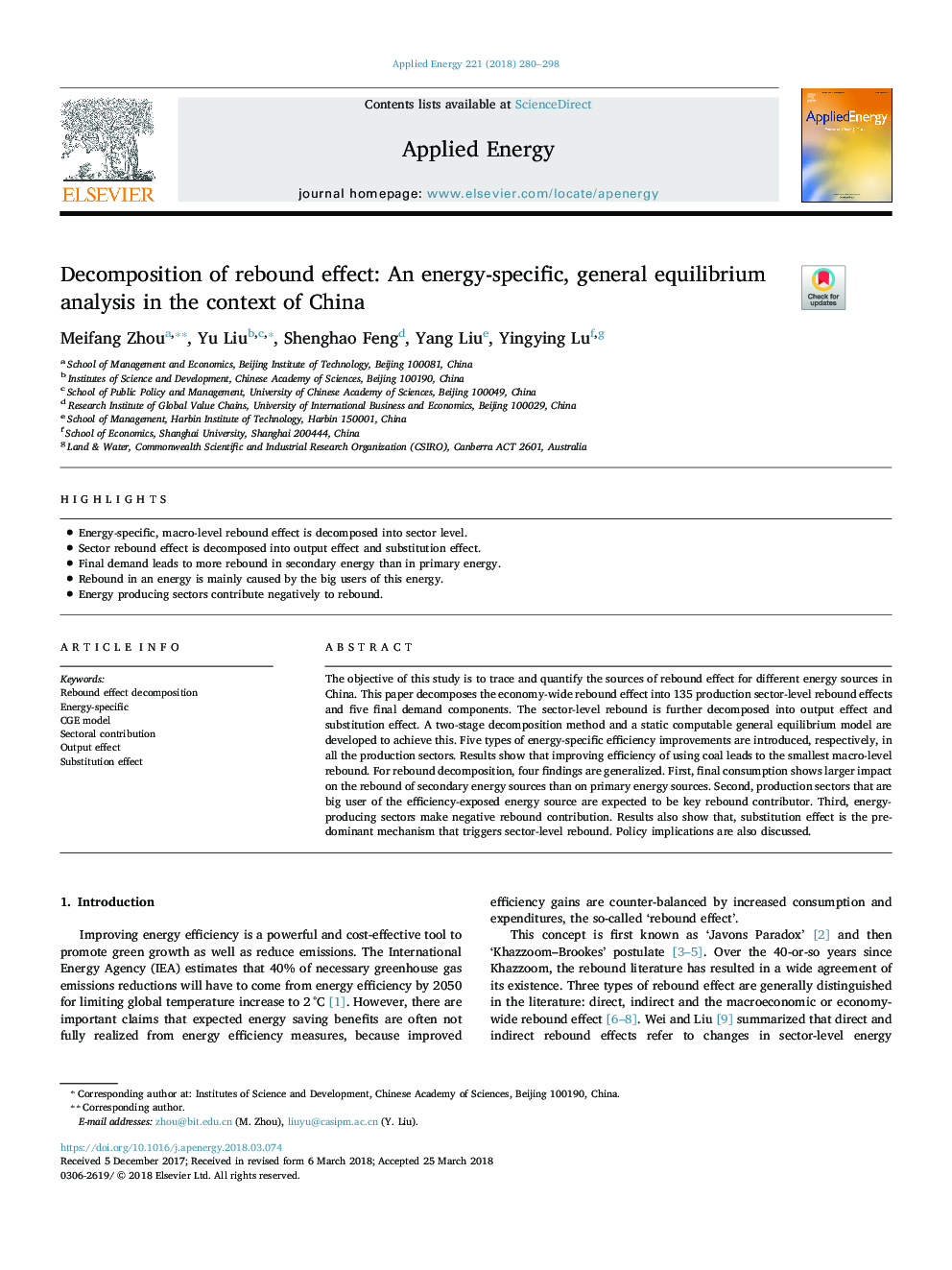| Article ID | Journal | Published Year | Pages | File Type |
|---|---|---|---|---|
| 6680129 | Applied Energy | 2018 | 19 Pages |
Abstract
The objective of this study is to trace and quantify the sources of rebound effect for different energy sources in China. This paper decomposes the economy-wide rebound effect into 135 production sector-level rebound effects and five final demand components. The sector-level rebound is further decomposed into output effect and substitution effect. A two-stage decomposition method and a static computable general equilibrium model are developed to achieve this. Five types of energy-specific efficiency improvements are introduced, respectively, in all the production sectors. Results show that improving efficiency of using coal leads to the smallest macro-level rebound. For rebound decomposition, four findings are generalized. First, final consumption shows larger impact on the rebound of secondary energy sources than on primary energy sources. Second, production sectors that are big user of the efficiency-exposed energy source are expected to be key rebound contributor. Third, energy-producing sectors make negative rebound contribution. Results also show that, substitution effect is the predominant mechanism that triggers sector-level rebound. Policy implications are also discussed.
Keywords
Related Topics
Physical Sciences and Engineering
Energy
Energy Engineering and Power Technology
Authors
Meifang Zhou, Yu Liu, Shenghao Feng, Yang Liu, Yingying Lu,
